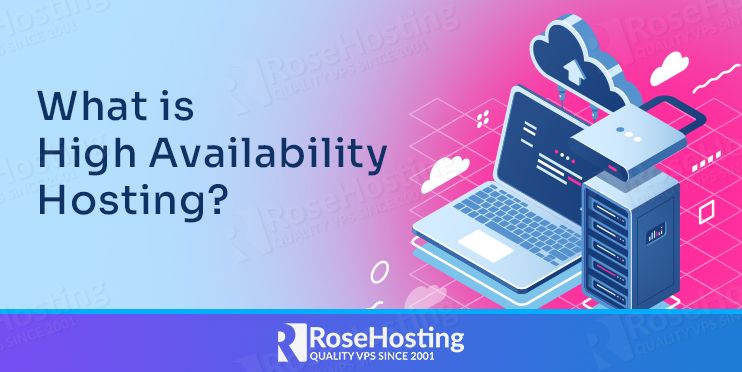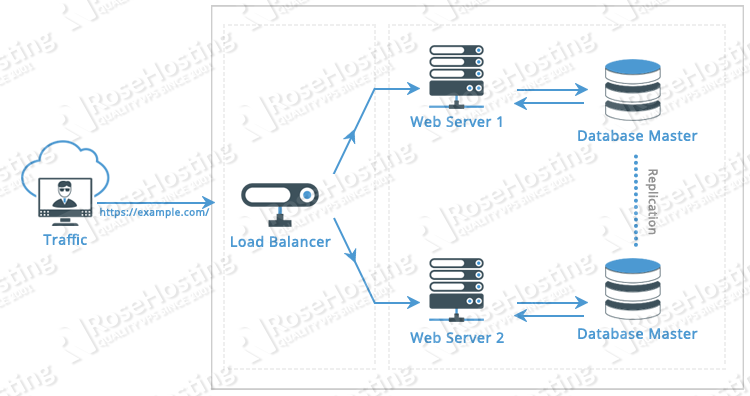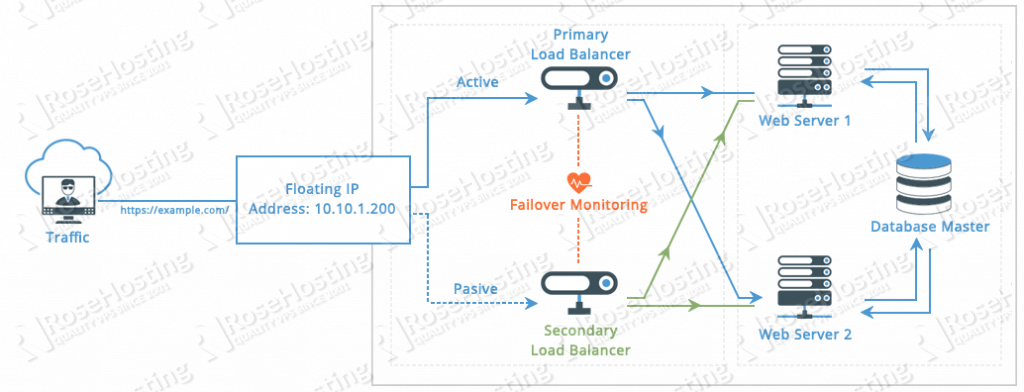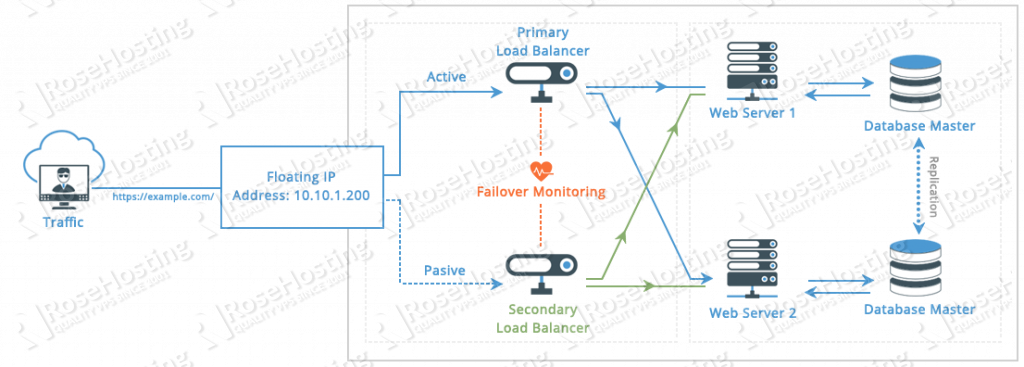
When a server acts as the host for a website or an application, it is the backbone of this website or application’s functionality. The server provides resources with which the application can run on, as well as an internet connection that can allow for input from outside sources to occur, as well as output to other servers/systems. Therefore, it is vital that the server hosting your website/application is in working order and has its resources and capabilities available to be utilized at all times.

Much like your website or application, the server that hosts it also has certain resources that it relies on for its continued operation. An internet connection is required for you and any other outside computers to access the server remotely. A constant supply of power is needed for the server to run. Internal server resources are also needed in order to allocate resources to programs, and finally, the operating system itself needs to be functioning properly in order for your website or app to function properly as well. If any of these prerequisites aren’t met, then your project or website will fail to run, making it inaccessible. This means that neither you nor any other people can reach your server. This is what needs to be avoided the most, especially in a professional context.
This is where high availability hosting comes in. The concept of high availability hosting revolves around making all possible variables as redundant as possible. High availability hosting comes down to a few key differences:
- Network Redundancy: This is the most important factor when it comes to keeping a server online. Therefore, it’s best if there is at least one extra networking backup that will allow your server to remain online, even if the first network connection goes offline.
- Uninterrupted Power: With tools such as battery backups and generators, it’s important to make sure that the server is always getting the power it needs. Additionally, a backup power supply inside of the server further ensures uninterrupted operation.
- Redundant Storage: This is by far the most important factor to look out for. More often than not, a server will go down due to its storage hardware eventually failing with time. It is almost always the first hardware component to fail inside of a server. Therefore, there are a couple of practices that can be kept up to make sure that data integrity is maintained. Local backups on another storage drive are good, and offsite backups on a different server are an excellent way to save your data – however, a combination of both is the most secure method of keeping your data protected and accessible at all times.
There should never be a single point of failure that can occur with a high availability server – instead, there should always be a backup to make sure that when one aspect of the server goes offline, there is a secondary measure to keep everything accessible until the primary system is back up and running. The reasons listed above are what makes high availability hosting so attractive to most businesses and individuals; it not only allows your business or project to be more professionally maintained, but it also keeps your data and projects safer in the process.
There are also several types of high availability hosting, each with its own benefits:

- Redundant Web Servers and Databases: A load balancing server intelligently and optimally passes through internet traffic to both web servers, each with an identical copy of a database server. With this type of redundancy, you are covered against either a web server’s failure, as well as a database server’s failure. However, the single point of failure here is the load balancer. If that fails, the rest of the system becomes inaccessible, and your servers are offline.

- Redundant Load Balancing and Web Servers: Two or more load balancing servers work together to optimally serve content from your servers to the clients’ browsers. This system typically uses two or more web servers and a database server that is shared with the web servers. With redundant load balancing servers as well as redundant web servers, your web content will always be online, regardless of whether one load balancer or one web server fails. However, the single point of failure here is the database server. If that server goes offline, your databases will be inaccessible by your web servers, meaning your clients won’t be able to access the information through the webserver.

- Fully Redundant Systems: Load balancing servers send internet traffic to several web servers all hosting the same content. These web servers also communicate with mirrored database servers in order to access and store certain information. With this system being fully redundant, any aspect of the system can fail, and the content on your servers will still remain online. Even if a load balancer, a web server, and a database server fail, all contents are still able to be accessed by the internet. While this offers full protection against any combination of servers in the system going offline, it also requires the highest number of servers to be run for this system to function.
These mirrored servers all constantly update and synchronize within seconds to make sure that all data on one server is 100% identical with the data on all other servers of that type (web servers, database servers, etc). When using redundant load balancing servers, a floating IP address is used to ensure that the content found on all web servers can be accessed using only one IP address. With a floating IP address, you can have a failover system where if one server goes down, all traffic seamlessly transfers onto the other functioning servers, without the users ever noticing.
If you are looking for custom-made high-availability hosting do not hesitate to contact our support team via the live chat option on our website. They are available 24/7 and can explain and answer any question about high-availability options for your website or application.

The time needed for an order to be processed and for your system to be online depends on what type of high availability hosting you order. If a completely custom setup is required, two business days are needed – one for the installation and configuration of the servers, and the second day for QA and testing before delivery. If a pre-configured setup is chosen, then the order can be processed and delivered in just one day.
If you are looking for custom-made high-availability hosting do not hesitate to contact our support team via the live chat option on our website. They are available 24/7 and can explain and answer any question about high-availability and fault tollerant hosting options for your website or application.